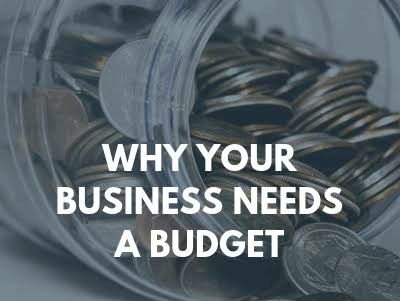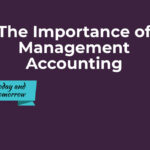Budgeting in business was always a critical function, but due to the Corona Virus and the resulting economic slow down now and in the months to come has made budgeting for the coming fiscal unavoidable.
Let us for a few minutes consider the steps involved in taking a road trip. We first decide where we want to go, find the destination on a map, plot the best route to take and all throughout the way you keep referring back to the map to ensure that you are sticking to the route and haven’t gone astray.
A budget serves as a map for the business journey that you are going to undertake in the coming financial year.
You draw up a budget at the beginning of the financial year and then throughout the year keep comparing your current position with the budget and make adjustments to stay on track to reach your business goal for that financial year.
No wonder every large company has an annual budget. Why is it that almost every SME that i meet doesn’t have a plan in place?
In this blog post i am going to take you through the four simple steps involved in preparing an annual budget. I hope by the time you are finished reading, the task of budgeting wont seem so daunting and you will want to try it for your own business.
A Budget in just 4 easy steps
Step 1 : Estimate Inflows
It all starts from the top line. Start off by realistically estimating the expected level of sales for the next year. Use the previous year as a base and make adjustments for growth, strategy changes, macro economic changes and demand situation of your product or service.
A very important thing to note is the word “Realistic”, this is a budgeting exercise not a motivational or aspirational target for sales persons. This is meant for you to assess and plan for the next year. However I can’t stress this point enough. Many budgeting exercises become useless simply due to the the sales figures being unrealistic and unachievable to begin with.
Also, the sales figures you arrived at will need to be adjusted to get the estimated cash inflows i.e remove the amount of outstanding receivables likely to be at the end of the year and add the amount of current receivables that will convert into inflows in the coming year..
Step 2 : Estimate Outflows
Hurray! At this point you have the figures of inflows which are expected in the coming financial year. Next you will start with estimating all expenditure. Here you will consider only revenue expenditure i.e any investments in properties, plant and equipment etc will not be considered. That is left for step 3.
For now, you will estimate all expenditure in three buckets viz. Direct Variable Costs, Fixed Operating Costs and Marketing, Business Development & Sales Expenses.
Direct Variable Costs are all those costs which directly result in the goods or service that you deal in. For example Purchase of inputs, wages, power & fuel directly used in the conversion process etc. To estimate these, a common and simple method used is to multiply the sales estimates with the “Conversion Ratio” for the previous year i.e the ratio of all conversion costs to Sales.
Fixed Operating Costs are all those costs which are fixed in nature and usually do not vary substantially to regular fluctuations in the level of business activities. A common example for such costs are salaries of office staff, Rent, Office Electricity and other running expenses which stay roughly constant on a month on month basis like stationeries etc.
For the Marketing, Business Development & Sales Expenses, you will need to note down all those expenses that you are likely to incur to maintain the flow of customer enquiries and sales activities that you have estimated before. This may include things like ->
1. Advertisement on social media, journals and magazines
2. Expenses related to participating and/or attending trade shows, exhibitions and conferences.
3. Cost of travel needed to increase sales reach and network etc
Once you have estimated all these in their individual buckets you will need to adjust them just like you did for sales with the outstanding balances at the beginning and the end to arrive at estimated outflows.
Step 3 : Estimate Capital Outlay
This is the step where you will start looking at estimating all the investments that you are likely to make in properties, plant & equipment during the year to come. This could be replacement of old machinery, necessary upgrades or even an expansion plan. Asking each department to submit their requirements for essential equipments needed during the coming year could be a logical place to start.
More often than not such capital expenditures require up front payments but if not, do not forget to adjust outstanding balances to arrive at cash outflows.
Step 4 : Putting it all together
Superb! If yo’ve got so far, you are really serious about planning for the well-being of your business.
Next we shall put it all together so that you can see all your hard work come to life in the form of an annual budget.
First you shall Subtract the outflows arrived at in step 2 from the inflows we got from step 1 to arrive at the “Net Operating Cash Flows From Operating Activities”. Which is nothing but a fancy way of referring to the amount that your business is likely to generate during the budgeted period. From this you shall further subtract the outflows in terms of Capital Outlay calculated in step 3.
If you do all this you will finally arrive at Net Cash Flow during the period which could be either positive or negative. If it is positive, rejoice, you are estimating to have surplus liquidity in your business. But if it is negative don’t fret. You just need to plan you fund the shortfall. This could be through taking loans from your bankers or infusing your savings into your business, raising capital through Angel Investors, Venture Capitalists or other such investors/investor groups. Probably loans from relatives may also be an option.
Three cheers for you for coming this far, hip hip hurray!!!
Budgeting and Inscite Advisory
Inscite Advisory is a next generation professional services firm, which has made it their mission to empower businesses with the tools needed to take better and more informed decisions.
If Budgeting is something that you need help with, our experts would surely be able to lighten the burden. You can book n absolutely no cost, no commitment advisory call back with our experts.
Book a Slot Now.
Hope this helps.
Happy Accounting.
Cheers.
P.S Booking is available only till slots last.








